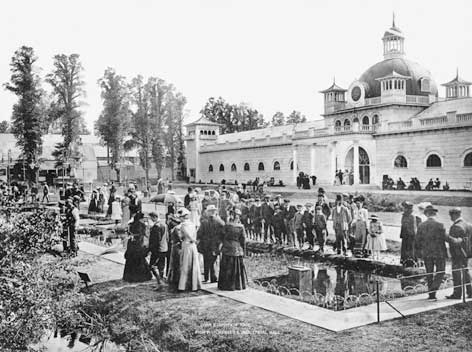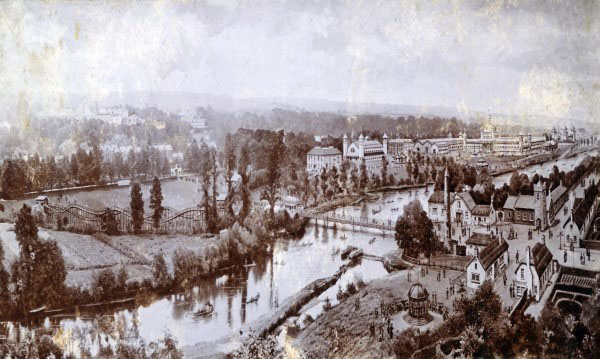1902
Pair of Season Tickets for Cork International Exhibition 1902
The Inventory team documented a pair of season tickets to The Cork International Exhibition which was held in 1902, attracting exhibits from all over the world and almost 2 million visitors.
By Joanne Hamilton
The tickets are red with gold lettering on the front reading:
“Cork International Exhibition 1902 Season Ticket”.
Each ticket has the emblem of a tall ship between two tall flagged towers over water on the back. The Latin motto “Statio Bene Fida Carinis” which means “A safe harbour for ships” is incorporated, the emblem represents the arms of Cork city.
The inside of the ticket is pale green with black printed lettering. The signature of the ticket holder is inscribed at the bottom under the terms and conditions. A printed issue number is located at the top. The tickets are dated 1902.
What was The Cork International Exhibition?
The Exhibition was first proposed in 1901 when the Lord Mayor of Cork, Edward Fitzgerald, suggested that an international exhibition be staged there. Exhibitions of this nature had previously been held in London in 1851 and Dublin in 1865 and 1872.
The proposal was welcomed with enthusiasm in Cork and planning began immediately, led by Fitzgerald and an organising committee. Plans for the Exhibition were very ambitious for the times, however in less than two years, May 1st 1902, the Exhibition was officially opened to the public.
It was located on a large 44 acre parkland site, encompassing an area on the Mardyke that now includes the Cork Cricket Club, Sunday’s Well Boating and Tennis Club, Fitzgerald Park and UCC Sports arena.
Figure 2: Aerial artists' impression of the Cork International Exhibition of 1902.
What was exhibited?
Several large exhibition halls and pavilions housed a range of industrial and agricultural exhibits from many countries including Canada, Turkey and China. There were displays of industrial and agricultural machinery as well as horticulture, fisheries, art, craft and ceramics. The Exhibition also boasted other attractions such as fish ponds, a skating rink, water chute and a switchback railway which was a precursor to the modern rollercoaster.
The Department of Agricultural and Technical Instruction had a strong presence at The Exhibition with exhibits on dairying, cheese-making, cottage gardening, forestry, bee-keeping, poultry, fruit and vegetable drying and preserving.


Figure 3: Fishpond pavilion at the Cork International Exhibition 1902.
Why was it important?
The Exhibition was very successful, it was an enormous feat of organisation over a short space of time, hosting some 1.8 million visitors and attracting international attention to Cork. It was also an economic success making a profit of €6,178, providing a boost to the local economy. It was decided that a similar exhibition would be held in 1903, it was too a triumph and was visited by King Edward VII and Queen Alexandra.
Aftermath of the Exhibition
The Cork International Exhibition finally closed for good on 31st October 1903, in its aftermath Edward Fitzgerald was made a baronet by Edward VII. Some of the profits from the Exhibition were used to purchase a private house called The Shrubberies and land adjacent to it used during the event. These were then donated to the people of Cork and renamed Fitzgerald Park, now the city’s largest public park. The Shrubberies is now home to Cork Public Museum.
Learn more...
The tickets form part of the reserve collection of the National Museum of Ireland - Country Life, Castlebar, Co. Mayo, and are not currently on public display.
You can learn more in The Cork International Exhibition – A Snapshot of Edwardian Cork by Daniel Breen and Tom Spalding, published by Irish Academic Press.
Location:
Pair of Season Tickets for Cork International Exhibition 1902 is located at:
In Storage
Previous artefact:
Obsidian Arrowheads from Prehistoric Hokkaido
Next artefact:
